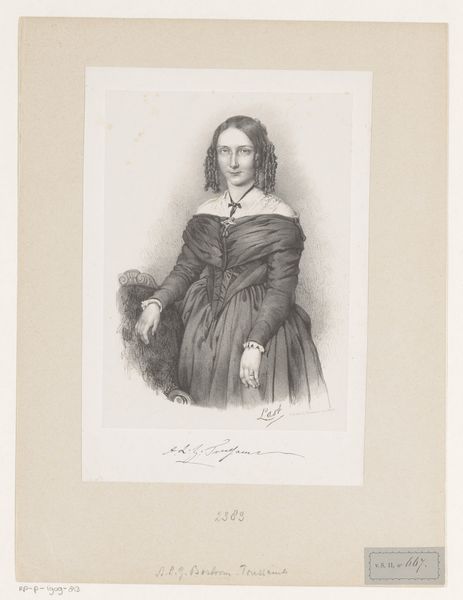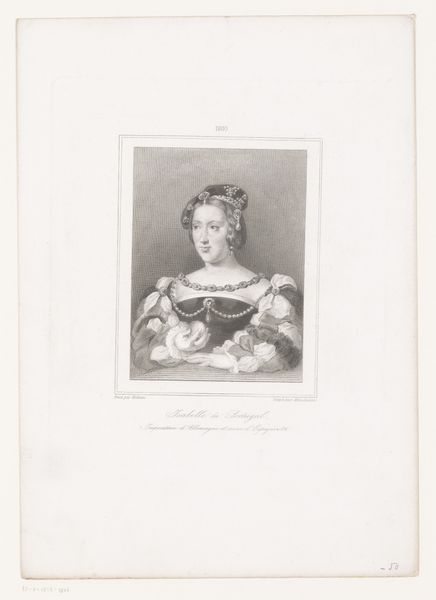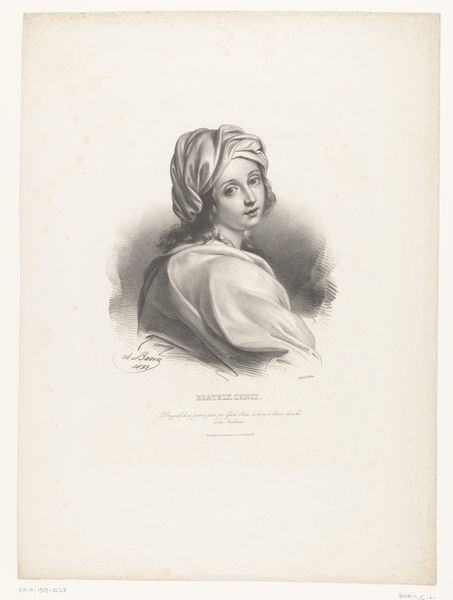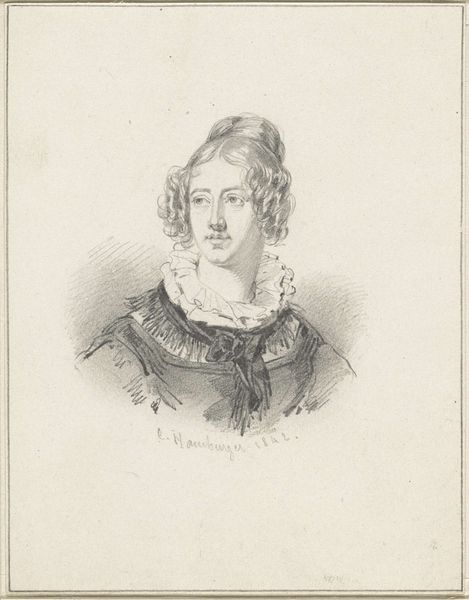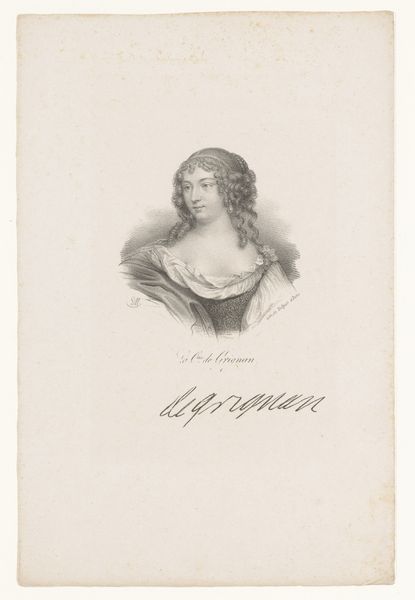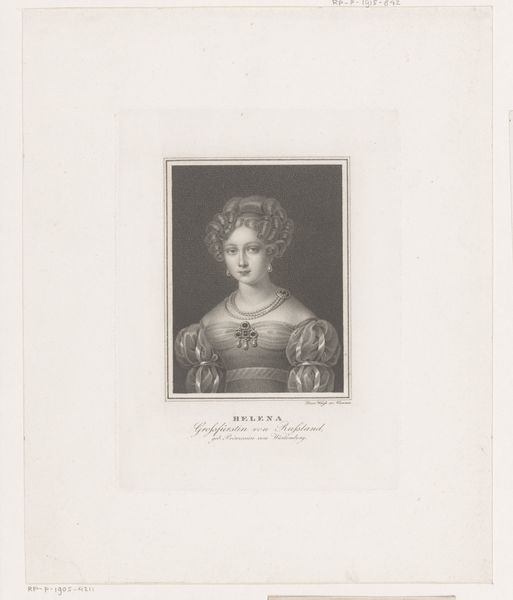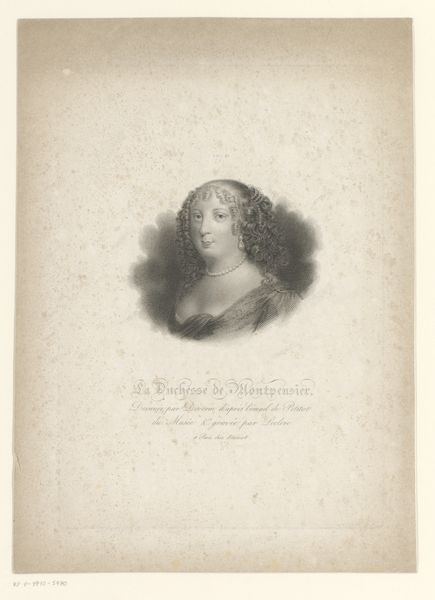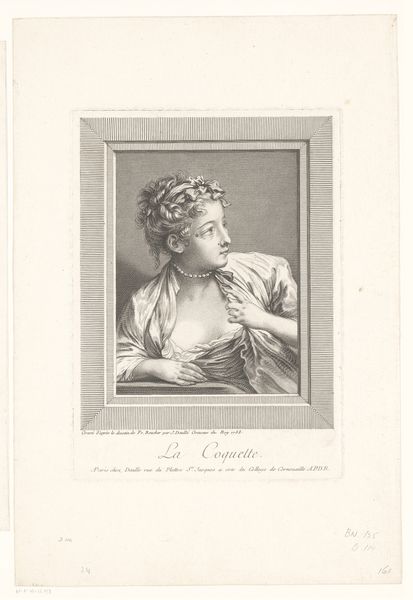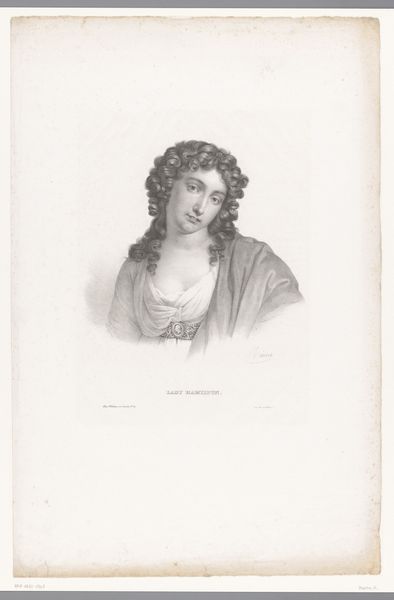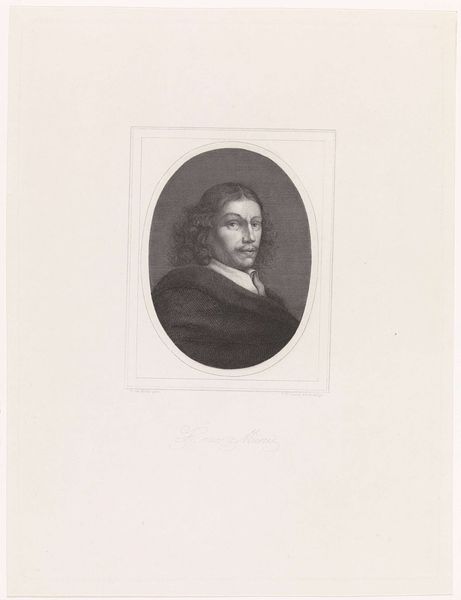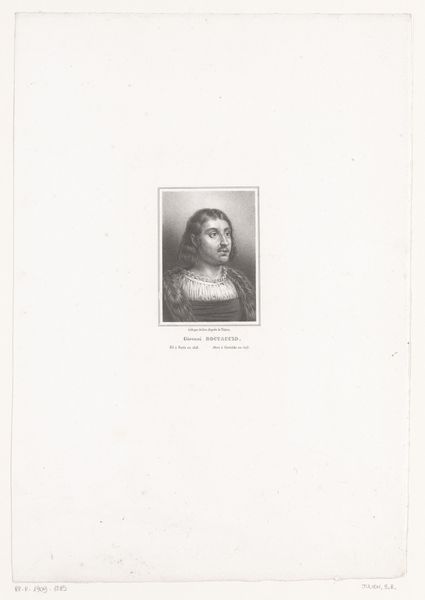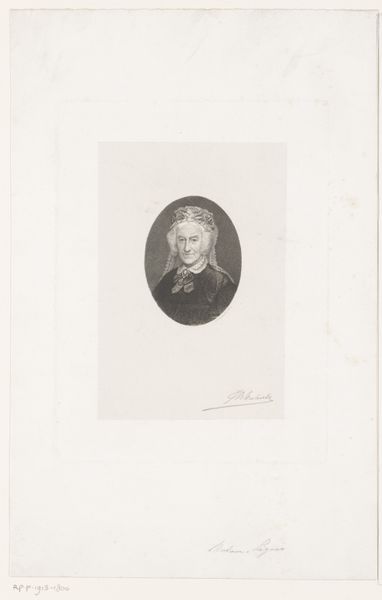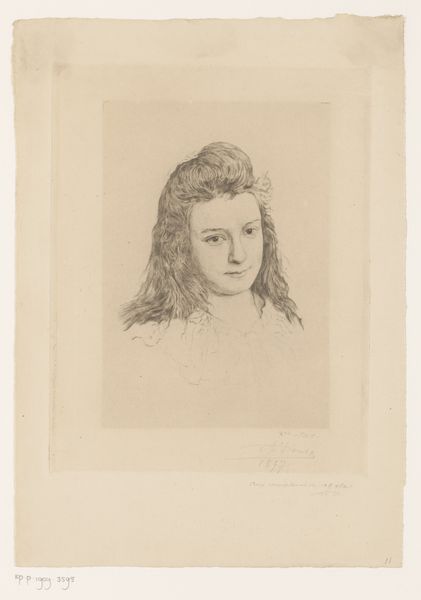
Dimensions: height 365 mm, width 270 mm
Copyright: Rijks Museum: Open Domain
Curator: Here we have Hendrik Wilhelmus Last's "Portrait of Elisabeth Johanna Hasebroek," completed sometime before 1852. It's an engraving. What are your initial thoughts? Editor: My first impression is that the portrait is quite subdued, almost melancholic. There's a weight to her gaze, despite the apparent formality of the pose. Curator: The artist uses very controlled lines, and I'm particularly drawn to how Hasebroek's features seem to subtly emerge from the shaded background, it gives the work an ethereal quality. Her modest apparel hints at Protestant values that can still speak to certain values of the 21st century. What does the sitter’s social positioning signify to you? Editor: Right, that restraint is important. Look at the tight control over light and shadow, but for me it emphasizes a kind of confinement. Think about the limited roles for women during this period. She is positioned within very clear societal expectations, which the formality of the portrait reinforces. Do you think that Last was perhaps attempting to question those societal constrictions in this print? Curator: Perhaps not overtly. But the use of soft, flowing lines, particularly around her face, creates a sense of vulnerability. While acknowledging her societal position, Last still suggests a depth of interiority and her eyes suggest quiet defiance to me. She certainly doesn't appear like someone without convictions. I see a certain integrity. Editor: I see that too. Although she may not have wielded power in a conventional political way, she could certainly still exercise influence, and leave a lasting impression of thoughtful conviction, within her specific social sphere, just as any modern woman does today. It also challenges viewers today to contemplate our continued, but different limitations and challenges based on gender roles. Curator: Absolutely. Art like this acts as a powerful conduit for cultural memory. These aren't just portraits, they’re records of power dynamics and social anxieties rendered in symbols. Thank you, this was particularly interesting for me! Editor: Thank you, it really allowed us to view this historical print through a lens that speaks to contemporary intersectional concerns!
Comments
No comments
Be the first to comment and join the conversation on the ultimate creative platform.
